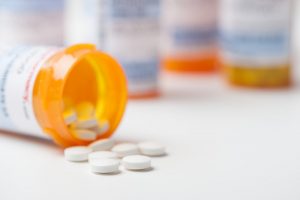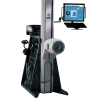
#ChoosePT: Combating Opioid Addiction
Treatment GuidelinesThe facts are startling, and all point to a troubling truth: our nation is facing a huge drug problem that doesn't always start on the streets. For many people who become addicted to opioids (including prescription painkillers and heroin), the problem often begins at the pharmacy.
The facts are startling, and all point to a troubling truth: our nation is facing a huge drug problem that doesn’t always start on the streets. For many people who become addicted to opioids (including prescription painkillers and heroin), the problem often begins at the pharmacy.
- According to the CDC, the number of accidental opioid overdoses occurring every year in our country has quadrupled since 1999.
- This rise in deaths is correlated with a huge increase in the number of opioid prescriptions written and sold. In fact, the number of pain-killing prescriptions has also quadrupled–despite there being no significant change in the amount of actual pain people are reporting.
- Today, there’s nearly 100 people per day who lose their life from an opioid overdose.
- And it’s not just death and dying (though this is certainly the most tragic effect): long-term opioid use can have a dramatic impact on the quality of life of the user, increasing a person’s risk of depression and other psychosocial problems. The epidemic is also costing the healthcare system billions of dollars annually.
What’s particularly challenging about this drug dependency epidemic is that opioid addiction can be found in virtually every socioeconomic class. It affects teenagers and grandparents, CEOs and manual laborers, doctors and teachers. Virtually every town in America is touched by this public health problem. In fact, a new study published in the CDC’s Morbidity and Mortality Weekly Report revealed that 1 in 5 people who are given a 10-day prescription for opioids like hydrocodone become long-term users.
That’s right: 20% of us who are given prescription medication to combat pain from any number of physical conditions are at risk for becoming drug-dependent. It’s no wonder the opioid epidemic in this country has been described as “crippling.”
But this is where the silver lining comes in: as physical therapists, we have a unique ability to impact people throughout such a broad and diverse socioeconomic scale. We have the potential to support a wide range of people who are in pain, and provide strategies that can help people reclaim a high quality of life–while avoiding the risk of side effects and long-term complications associated with opioid use.
About the #ChoosePT Movement
Backed by the recent President’s Commission on Combating Drug Addiction and the Opioid Crisis, the APTA is moving forward with its #ChoosePT campaign that is being used to raise awareness about how physical therapy can be an effective alternative to opioid prescription and use.
The message of #ChoosePT is multifaceted:
- Our services are applicable to anyone suffering from acute or chronic pain–including people who may not realize that drug-free options exist. And while prescription medications certainly have their place, people do need to become more aware of the possibility that healing and recovery is possible without a reliance on drugs.
- Physical therapy is not merely about treating or masking pain–it’s about resolving the underlying issues that are causing dysfunction in the first place.
- Most physicians already recommend non-drug therapies such as PT to be used in addition to or even in lieu of an opioid prescription. Our role as PTs, then, is to advocate for our profession by helping people realize the benefits of consulting with a physical therapist as soon as a pain issue develops.
The bottom line: opioid addiction is a big beast, and not one that is easily defeated. As clinicians, we can do our part by advocating for our profession and supporting our patients who are in pain, along with their loved ones who may also be struggling.
Get Involved: How You Can Advocate For PT In Lieu Of Prescription Drugs
- Use the #ChoosePT Campaign Toolkit. Click here to find helpful links, products, and graphics to share on your clinic website.
- On social media? Get your staff involved by sharing the #ChoosePT hashtag on Instagram or Twitter.
- Talk to your patients. Let them know about the risks of opioid use and provide them with educational resources. Know the signs of drug-seeking behavior, and know when to refer.





